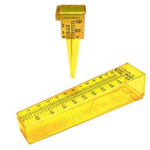
In Cincinnati, we will be on a weather roller coaster with cool rain Wednesday afternoon, a rain-snow mix Thursday morning, and much warmer rain Thursday night into New Year Day, then turning cooler again. Minor snow accumulations cannot be ruled out Thursday morning, mainly on grassy surfaces. Overall rainfall amounts by week’s end could approach 2 inches. Flooding concerns should be fairly minimal since only 1 inch of rain has fallen in December which is well below normal.






 >>>
>>>

